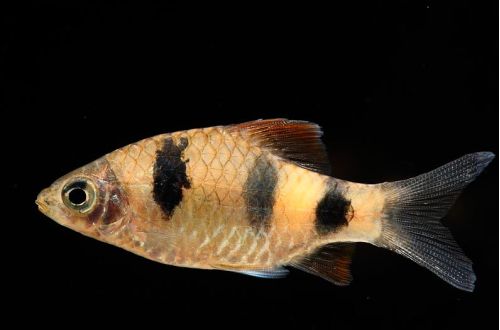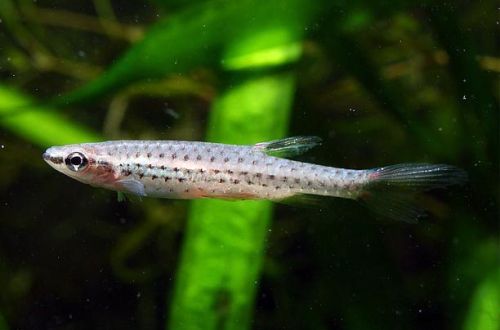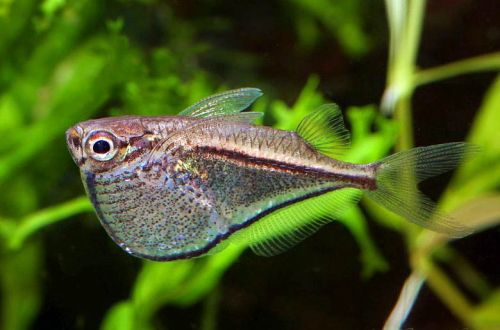
Barbus Setnai
Barbus Setnai, scientific name Pethia setnai, belongs to the family Cyprinidae (Cyprinidae). Named after the Indian ichthyologist Setnai, who classified this species of barbs. Easy to keep and breed, compatible with other aquarium fish species of comparable size. May be recommended for beginner aquarists.

Contents
Habitat
It comes from the Hindustan Peninsula, from the territory of modern India. The distribution area is limited to river systems flowing down the slopes of the Western Ghats mountain range and further along the western coast. The fish inhabit mountain streams and small rivers, where they congregate in small pools or slow-flowing regions. The flow rate, channel depth and turbidity vary with the seasons.
Brief information:
- The volume of the aquarium – from 80 liters.
- Temperature – 20-26°C
- Value pH — 6.0–7.5
- Water hardness – 4–15 dGH
- Substrate type — stony
- Lighting – any
- Brackish water – no
- Water movement is weak
- The size of the fish is 6 cm.
- Food – any food
- Temperament – peaceful
- Keeping in a group of 8-10 individuals
Description
Adults reach a length of about 6 cm. The color is silvery with yellow tints, the fins are translucent. The body drawing consists of three black strokes. Sexual dimorphism is weakly expressed, there are no obvious differences between the male and the female.
Food
Not picky about diet. Accepts most popular aquarium fish foods. They can be content with exclusively dry food (flakes, granules, etc.).
Maintenance and care, arrangement of the aquarium
The optimal size of the aquarium for a small flock of fish starts from 80 liters. Arrangement is optional. Barbus Setnay will look most harmoniously against the background of a sand and gravel substrate, boulders of variable size and various snags. If desired, you can supplement the design with artificial or live aquatic plants from unpretentious species or mosses, ferns.
The content is simple and even a novice aquarist can do it. Maintenance of an aquarium will require several standard procedures: weekly replacement of part of the water with fresh water, regular cleaning of organic waste, maintenance of equipment and monitoring of pH, dGH, oxidizability.
Behavior and Compatibility
Peaceful mobile fish, compatible with many other popular species from among the viviparous, tetras, iris and others. It is recommended to maintain in a group of at least 8-10 individuals.
Breeding / breeding
In favorable conditions, spawning occurs regularly. With the onset of the mating season, females scatter hundreds of eggs in the water column, and males fertilize them. Having sunk to the bottom or into thickets of plants, the eggs become left to themselves. The incubation period lasts 24-48 hours, after another day the fry begin to swim freely. Parental instincts are not developed, so adult fish, on occasion, will gladly eat their own offspring. Thus, the survival rate of fry in a community aquarium is very low, they are not only eaten by other fish, but also have difficulty finding suitable food.
In order to preserve the fry, it will be necessary to prepare a separate tank with identical water conditions, where the eggs will be moved after spawning is over. This spawning aquarium is equipped with a simple airlift filter with a sponge and a heater. A separate light source is not required. The light coming from the room is quite enough.
The fry are fed with specialized powdered food, brine shrimp nauplii.
Fish diseases
In a balanced aquarium ecosystem with species-specific conditions, diseases rarely occur. Diseases are caused by environmental degradation, contact with sick fish, and injuries. If this could not be avoided, then more about the symptoms and methods of treatment in the section “Diseases of aquarium fish”.





